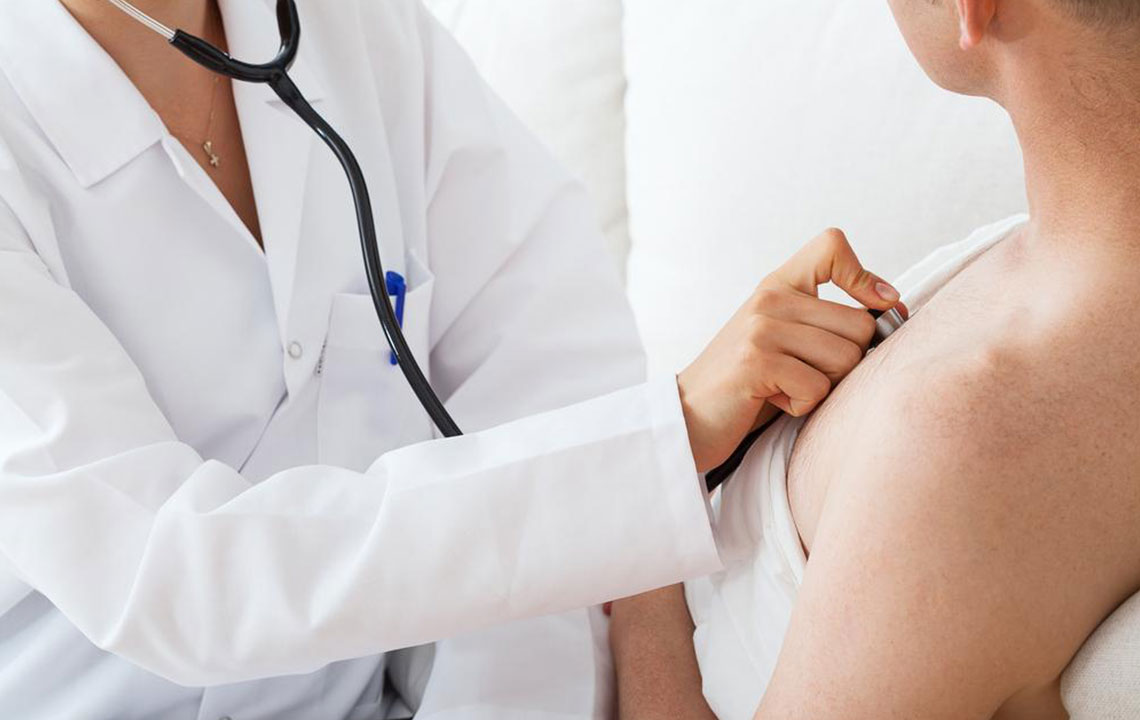Common Signs of Pneumonia and its Treatment
Pneumonia is an infection of the lungs that can result from bacteria, viruses, or even fungi. It usually starts when one begins to breathe in germs, usually after an episode of the cold or flu. Cold and flu make it hard for the lungs to fight back, resulting in infections. Chronic conditions like heart disease, asthma, cancer, or diabetes can also lead to pneumonia. People suffering from it develop heavy coughing, fever, and other signs.

Signs and symptoms of pneumonia
Signs of pneumonia can be mild to life-threatening. It depends on the severity of the infection.
- Coughing that produces phlegm (mucus).
- Because the alveoli in the lungs get filled with mucus, it affects the immune system of the body and the person suffers from mild to high-grade fever, chills and also experiences sweating. And because of the same reason, there is little or no room for the inhaled air to occupy for the lungs, thus the person suffers from shortness of breath.
- These above-mentioned conditions eventually lead to one common symptom, which is chest pain.
- There are symptoms that vary according to the severity of the condition and is based on factors like age and general health of the individual.
- Viral pneumonia usually occurs due to influenza virus (type A and B) and is most common in adults. The symptoms include a wheezing cough followed by high fever that occurs after 12 or 36 hours.
- Bacterial pneumonia is common lung infection in which the lung air sacks get inflamed. They might infect a small part of lungs or encompass it entirely, depending on the severity of the infection. Pneumonia causes a high fever of up to 105-degree Fahrenheit with profuse sweating, bluish lips and nails.
- Children (under the age of 5) suffering from pneumonia might experience fast breathing due to the condition.
- Infants suffering from pneumonia might experience vomiting, lack of energy due to having trouble eating and drinking.
- Viral and bacterial pneumonia, which is most common in adults might have lower-than-normal body temperature.
Signs and symptoms based on the location
- Hospital-acquired pneumonia (HAP)
This is a bacterial type of pneumonia that is acquired from hospital stay due to an ongoing treatment. It has the same signs of bacterial pneumonia. The most dangerous factor related to this type of pneumonia is that it is usually resistant to traditional treatment. People who are on ventilator machines and other intensive care units stand at a higher risk developing pneumonia. - Aspiration pneumonia
This type of pneumonia occurs when one inhales, food, drink, or saliva. This too has similar symptoms of bacterial pneumonia and occurs due to abnormal gag reflex which is a result of a brain injury, swallowing problem, or illicit use of drugs.
Treating the signs of pneumonia
- Bacterial signs of pneumonia
This type of pneumonia is managed using special treatments that kill the bacteria. People suffering from severe cases of pneumonia might have to be admitted to a hospital. They may also have to be treated with oxygen, breathing equipment to help ease the symptoms. - Viral pneumonia
Viral pneumonia can be treated with treatments that eliminate the virus. The doctor might prescribe a high dose in case the signs of pneumonia are more severe. In such cases the person is advised to drink a lot of fluids, have a proper meal plan, and rest. Viral pneumonia might take several weeks to cure completely.
Home remedies to treat the signs of pneumonia
While these treatment options alone might not cure the signs of pneumonia, they sure will help in providing relief from the symptoms.
- Saltwater gargling
Gargling with salt water will help in getting rid of the excess mucus in the throat, helping in getting relief from irritation. - Peppermint tea
Peppermint tea helps in expelling mucus. Peppermint helps in the decongesting chest and has an anti-inflammatory effect. - Lukewarm compress
Lukewarm compress helps in cooling the body from outside in. Avoid using cold compress as sudden temperature changes can cause chills. Lukewarm compress has a more gradual temperature change. - Soup
A hot bowl of soup provides nourishment to the body and helps in improving the immune system, as well as helps in replenishing vital fluids warms the body from inside out.